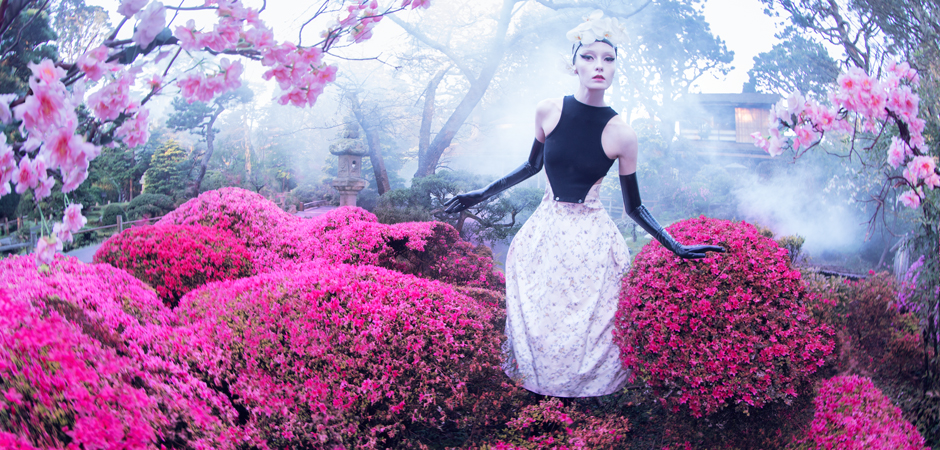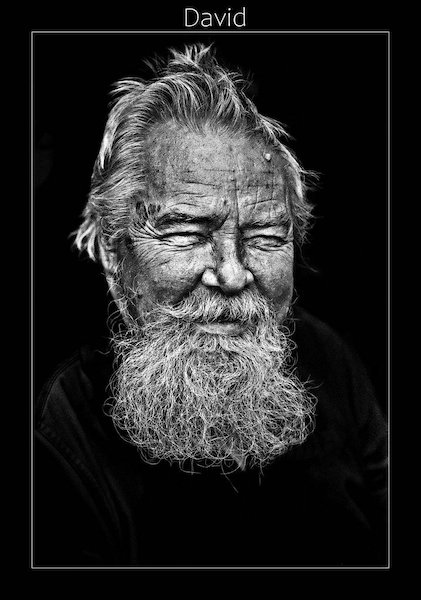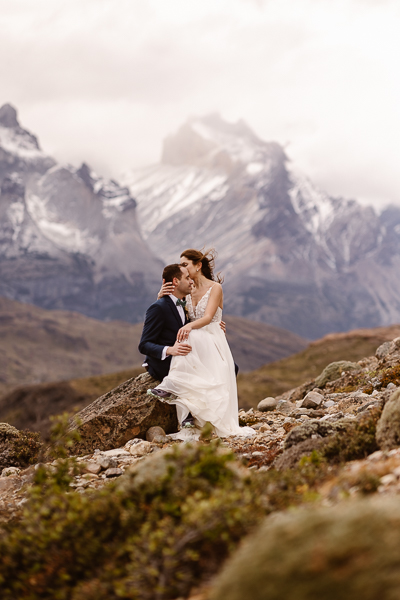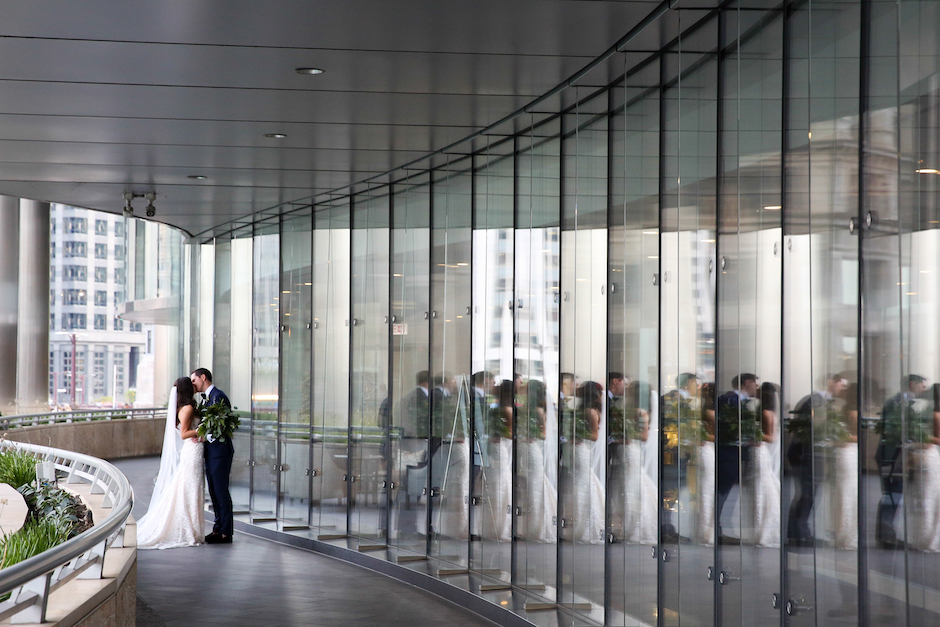Profiles
WHY YOU SHOULD KNOW HER
Amber Gray, with her director of photography and partner Julian Bernstein, bridges a consistent look between stills and videos for their editorial, fashion and commercial clients. ambergray.net |@mz_amber_gray

The word “shenanigans” holds special meaning to Amber Gray.
At the heart of all of the New York-based photographer and director’s shoots is a dose of silly mischief and roundabout approaches. “If we can find a way to make it complicated and difficult,” she says, “that’s the way that we’ll do it.” The we Gray is referring to is she and Julian Bernstein, her partner and encouraging if not somewhat apprehensive collaborator who serves as director of photography on her fashion, editorial and advertising shoots.
There was a healthy dose of shenanigans employed that time they wanted to do a shoot with cherry blossoms in the dead of winter, for instance. Gray and Bernstein ran around buying every bag of popcorn they could find, spray-painting them hot pink and gluing them to branches. “I still have scars from when the popcorn would fall on my arms with the hot glue,” Bernstein says. “But the shots!”
They’ll usually DIY their shoots for editorial and personal work—these two are always tinkering whenever not on assignment—but for advertising, they’ll sometimes hire people to make things for them.
When they were commissioned by W Hotels—one of Bernstein’s favorite shoots to date for their surprising level of autonomy—they wanted to shoot underwater photos. Gray looked into renting a pool, but in Manhattan? Forget it. “It was $5,000 to $10,000 a day, and we needed it for two days,” she says. Plan B: A tank. Renting one still cost around $5,000 a day. But to have one made custom was $12,000. It was the more expensive option, but it would also make them proud owners of a water tank. “So now I have a 1,000-gallon tank,” Gray says. Shenanigans. Completely transparent on all sides, including the bottom, they can shoot and light it from any angle.
Another time, after going through the $800, week-long ordeal of renting a silicone mermaid tail from a guy down in Florida on two separate occasions, she just decided to make one herself. Crafty and ambitious, Gray describes their place, diplomatically so, as a “testing ground for new ideas.”
“It’s like a Jim Henson factory,” Bernstein says.
While Gray thinks up the ideas and creative, Bernstein is the self-described “gadget guy” who covers the technical logistics. For photo shoots, she has the camera while he’s arranging for and setting up equipment; for videos, he’s shooting while she directs. They will typically do one or two client shoots a month with each preceded by weeks of planning and preparation.
“If we have $500, we’ll find a way to make it look like a $10,000 thing,” Gray says, “and then if we have $10,000… We’re always trying to squeeze a little more out.”
“What do you mean we?” Bernstein teases.
“Yeah, no, mostly me.”
“I’m always like, ‘Oh come on, do we have to?’” he says as Gray laughs. “Amber will always push it and finagle, she’s like myopic: If she wants something, she’s just going to figure out any way to get it, or the closest facsimile of that.”
Gray keeps a reference file of things that pique her fancy. Once, she spotted a photo of a “crazy marble room,” she recalls. A reverse-search of the image pointed her to Morocco. A couple of months later, she talked a magazine into letting her fly there, stay at a hotel and do a shoot in the room. “And it was just weird that I was able to con them into letting us do that!” she says with equal parts surprise and delight. “I think it’s just persistence, really.”
“Unbridled enthusiasm,” Bernstein adds.
“Bugging people until they give up.”
“It’s what she does with me,” he reflects. “‘No’ is never…”
Gray finishes his thought: “It’s a starting point.”

burning ambition
Gray’s bio on Instagram reads, “Quidquid latine dictum sit, altum videtur.” A rough translation: “Anything said in Latin sounds profound.” She puts a serious level of detail in her work, but Gray is quick to poke fun at anything taken too seriously.
In fact, Bernstein points out, humor is a big element in her work. “Yeah,” Gray agrees, “all the serious, ‘This is fashion, girl’—that is so gross, I hate that. Fantasy and humor? That’s my thing.”
Sometimes she gets there with “weird music”—oldies, psychedelic or folk songs—other times, a book. Most often, she gets a tiny hint of an idea, not one fully realized right away, and sketches it out to come back to later and build upon.
Nature is another source of inspiration, Bernstein reminds her. “Nature’s a huge one, that’s true,” Gray says. “Weird that I would live in New York City.”
Her life began on the opposite side of the country, in the suburbs of San Francisco, “where everything is California-bright with ranch-style houses, very middle class, normal,” she emphasizes, “and all I wanted was to go live in a forest with castles. I was always obsessed with something romantic and grand. Anything as opposite from the all-American, boring, two cars, two kids.”
In college, Gray worked at the coveted Adolph Gasser camera store where she met Bernstein, who worked there too. Their shenanigans began then, toting store equipment home in a pickup truck.
“I was dragged kicking and screaming doing stuff,” Bernstein insists, “but she was always four steps ahead.” Gray made a portfolio of photos of people she’d recruit, like a dressed-up male “femmy performer,” in a studio that the store would let them use or at home in one of her homemade sets. “There was a lot of body-painting involved,” she recalls. And when they were working the counter, Gray would address cards to agencies with these photos.
It worked; at 22 years old, she got her first gig, shooting a purse campaign for Montblanc on a 4 x 5 camera. This was 1997, they point out, when an ad budget was still fairly substantial. She made enough to relocate herself and Bernstein to New York a year later.
“When I first got to New York,” Gray says, “I strutted into all of the big agencies and was like, ‘I’m here!’ And basically, they just laughed in my face.”
“‘You’re too young,’” Bernstein voices dismissively.
“People would tell me, ‘You’re 23, we’re not going to give you a $250,000 budget. Come back in 10 years, girl.’”
Today, with digital dominating the industry, clients can afford to be more trusting. But by 1998, photographers were still shooting mostly film, Gray says: “It was like, ‘Well, I hope this girl knows what she’s doing.’”
A couple of things helped get her foot in the door in a magazine: connecting with stylists who could convince editors of the shoot’s fashion potential, and peppering them with PDF pitches filled with specific references for concept, hair, makeup and location. To keep work fresh, they’d shoot at a studio in the East Village on the weekends, when it was technically closed to customers (the owners gave them the keys). “Friday at 6 o’clock,” Bernstein says, “we’d be back with all our [expletive].”
Gray kept experimenting with sourced costumes, homemade props and sets, developing her off-the-wall otherworldliness, and magazines would throw $500 her way to make something look more expensive than it was. “I think they appreciated my enthusiasm and the fact that I was willing to do literally anything,” she says.
far from ordinary
Ad campaigns used to run anywhere from six months to a year, sometimes longer, Bernstein points out. Today’s challenge is keeping up the hype when campaigns get air (or screen) time for a week at max. Artists back then could also find a decently large loft or studio space in New York City—if not Manhattan, then Brooklyn. Gray and Bernstein used to have a place in the Gramercy neighborhood of Manhattan, but recently, they bought up a warehouse space in West New York, an area of New Jersey on the Hudson River opposite the Upper West Side. It’s the kind of space that’s long since skyrocketed to six or seven figures in New York: a big, open plan with 20-foot ceilings, a kitchen, office, lofted bedroom, rooftop—even the coveted garage.
By the time we’re sitting at Restoration Hardware’s rooftop café in the Meatpacking District in Manhattan, down the street from the Whitney museum, they’re deep in renovation mode and ready to set up shop. They’ve been so consumed by it that they’ve had to put shoots on hiatus, at least for the next few weeks until the space is finished.
With eyes on the prize, they were looking forward to all of the room they would have for shenanigans. On brand as ever, Gray wanted to put a pool on the roof with a window at the bottom of it, to both shoot through and use as a skylight into their office.
“Amber went through five structural engineers, waiting for the right answer,” Bernstein says.
“They all told me to [expletive] off,” Gray says. “They’re such nerds about everything.”
Now, the garage—once Bernstein’s would-be woodshop—will house the pool. “I want to put a window on the side so that I could go into a little cockpit and do underwater stuff from there,” Gray says.
It’s a major improvement on their previous studio arrangements. Sharing a space with another creative for $10,000 a month in New York wasn’t quite cutting it. They recall one guy installing a webcam in their space to peep and make commentary as they worked. A “toxic environment,” they concede, but also, Bernstein adds, “we were like, ‘You know, it’s kind of us though too.” Gray laughs, adding, “There are people who just do simple shoots, and then they see us coming and they’re like, ‘Oh, hell no.’”
“They’re like, ‘How long is this tree going to be in here?’”
“Trees, spray paint, 20 people showing up,” Gray lists.
“We had a row boat sticking out of the basement, up past the sidewalk, for like three months,” Bernstein says.
“It sounds like we were the Beverly Hillbillies, but it was a beautiful boat,” Gray clarifies. (Although it became a neighborhood favorite, they were warned by their landlord to lose it within a month. They used it for their intended shoot: Painting a woman blue, they laid her down in it, atop a bed of flowers, and set it afloat in water as Bernstein held his breath underneath to steady it.)
While objects themselves can spark an idea for a shoot, so can a location. Answering her childhood dreams of wandering among castles and greenery, Gray says Scotland has become a recent source of inspiration. Having written a script for a feature film she aspires to create, the fairytale terrain there is perfect for her vision. What clinched it was a photo she found of the Cave of Melody, a sea cave on the uninhabited Scottish isle of Staffa. It’s an indescribably magical place with hexagonal columns, supposedly created by volcanic eruptions. “I had the photo on my reference board,” she says. “It’s a crazy cave.”
The magazines she spoke to weren’t willing to pay her way there, but Gray was, so she ventured out to conduct research herself. “I want to do a feature film, and I want to shoot it there,” she says firmly. “My next goal is to make that happen.” The story she’s imagining takes place in “a tundra of green and crazy, wild oceans and castles that are abandoned and falling in on themselves.”
This would be the longest film Gray and Bernstein would make, but not the first. Gray studied film in school and experimented with videos shot on 16mm. Once digital caught up, the duo began with Canon cameras for videos before putting a RED Epic camera to work on short films and music videos.
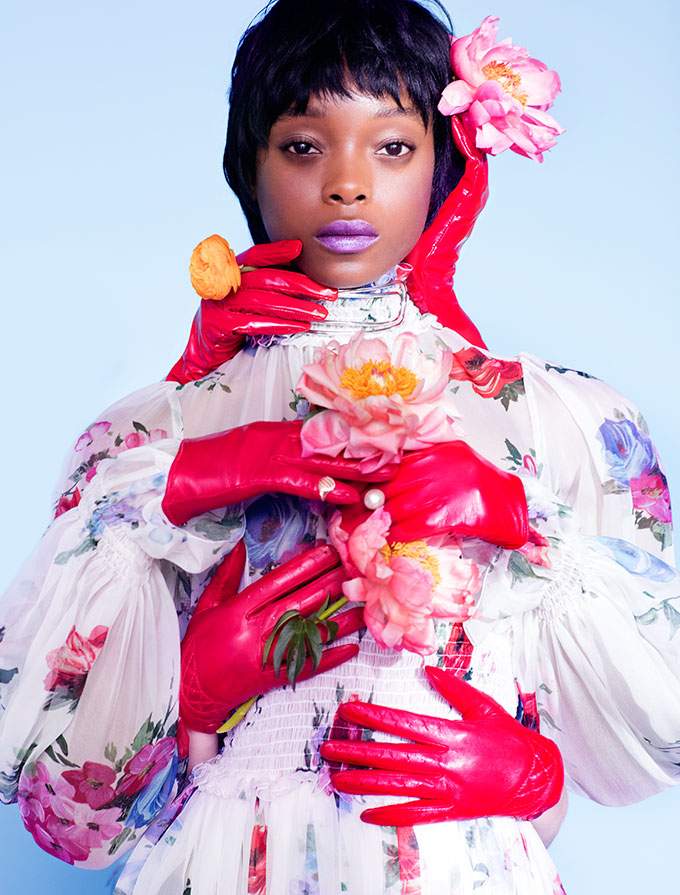
“Now, pretty much every shoot that we do, we do some video version,” Gray says. Videos are more challenging, she concedes, but the emotion and movement that can be conveyed outside of a single frame make them a better reflection of her storytelling style.
Last year, she shot a short film, Flight 666 to Pluto, for Paper magazine, a retrofuturistic story about a drug-fueled plane ride to Pluto featuring the music duo Superfruit and Eureka O’Hara, a drag queen from RuPaul’s Drag Race. Shot in an L.A. studio made up entirely of airplane interiors, they chose the ‘70s Boeing 747. After a full day of shooting, the film is a minute long and packed with action.
“I had that idea for a long time,” says Gray, who pitched it to a couple of disinterested magazines before landing on Paper—a stylist friend told her about their general open-mindedness to ideas.
But a prominent portion of her and Bernstein’s films are requested by clients for whom they were already shooting stills. “I think clients now feel obligated to ask for video even if it doesn’t necessarily make sense” and no script is in place, Gray says. “Some clients are fine with just having a girl walking and then doing some reverse—making something out of editing.”
“They think you can just flip your camera to video,” Bernstein adds, “but it’s not going to look the same. Part of our workflow is shooting so that our stills and video look really similar, with minimal fuss between. That’s something we figured out really quickly.”
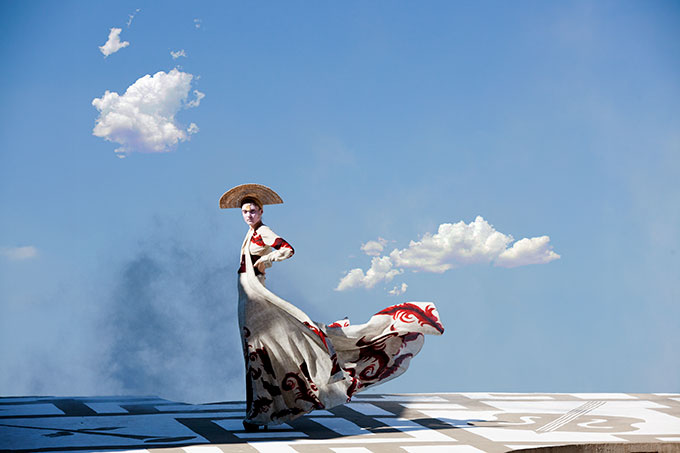
qualified to be here
Some clients don’t get it. It’s not just with video—the pair has encountered some bizarre demands on their photo shoots as well.
One coffee company sent them to Italy for a couple of weeks to shoot a model wearing a bespoke gown in a beautiful mansion—no complaints there—only for the client’s creative team to hover over Gray’s shoulder as she worked, peering at the monitor and insisting that every part of the image be sharp.
“It made no sense because all of my pictures are shallow depth-of-field or shot with a wide-angle lens,” Gray says.
“The curtains are 20 feet away and the girl’s holding a cup of coffee, which is all about the espresso,” Bernstein says. “You want the curtains out of focus.”
Webcams have continued to haunt the duo as well, with some art directors insisting on watching a shoot from afar. “And when we look at the little window, they’re not even there,” Bernstein says. “And then they have a comment about something we shot 20 minutes ago.”
But some clients do get it. ABC Carpet & Home was one. A dancer wearing their clothes twirled around their furniture, staged in a worn-down, abandoned space, as Gray photographed her with a slow shutter. “They didn’t care about having everything sharp,” she says. “It was really about the feeling of what they were selling,” more than the objects themselves.
That abstraction is something she wants in her films, too. Rarely do they have any dialogue; they’re often driven by visuals and music. Inspired by director Ken Russell’s flamboyant style and Sally Potter’s 1992 film Orlando, Gray loves a loose, non-linear, poetic narrative. “Those movies probably aren’t going to be big sellers,” she admits, “and I’ve heard that from producers.”
“Especially because you’re making for a global market,” Bernstein notes. “You have to make everything so tidy and watchable in any language.”
With her script written (albeit, in need of some revision, she says), Gray and a producer friend of hers are pitching it around, though the response—for now—has been concern about the potential cost and the non-linear story.
“People just want reality right now, which irks me to no end,” she says. “I don’t care about reality at all. I live in it. Enough already.”
Besides the all-consuming renovation in West New York, Gray has been keeping busy with a couple more “seedling scripts”—one a comedy, the other a quasi-fantasy. Scriptwriting is a form of storytelling that’s a bit outside her comfort zone, she says. It would seem like a bold move, but Gray isn’t holding herself back. As odd as it may sound, that’s something she wishes she had done more confidently when feeling qualified was a struggle.
“I always felt like, I have to earn this. But the people who got the furthest the quickest with their careers didn’t wait to be validated. They just insisted. As much as I insisted on my creative ideas, I still have a problem demanding respect.”
Part of that paradox comes with being a female creative in the industry, Gray adds. “As a woman, if you try to rip people a new one, they’re like, ‘Oh, she’s such a bitch, who does she think she is?’ Whereas with guys, they’re like, ‘Oh, watch out, he demands perfection.’”
Still, this has never stopped her from bringing her fantastical ideas to the real world. Knowing now that each of her images is filled with complicated approaches and temporary logistical setbacks that get solved with a homespun fix, look at the work and think about what went into them. As Bernstein says, “We never really do the same thing twice.”
Visual Cohesion From Stills to Video
The key is in the lighting. For beauty shoots or projects that need higher f-stops, for instance, they’ll take their Broncolor strobes for the photos, and for video, “custom-fabricated tungsten units” to imitate the strobes.
THE FAVORITES
Stills
Camera: Canon 5DS
Lens: Canon 11-24mm f/4L
Video
Camera: RED Epic
Lenses: Sigma 18-35mm T2 Cine Zoom, Canon 11-24mm f/4L
Related: 7 Quick DIY Lighting Solutions for Portrait Photographers
8 Easy Ways Photographers Can Create Engaging Video Content
Photographer You Should Know: Cole Wilson

